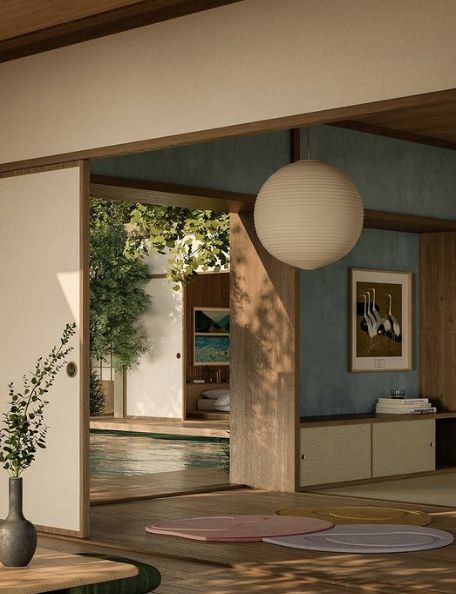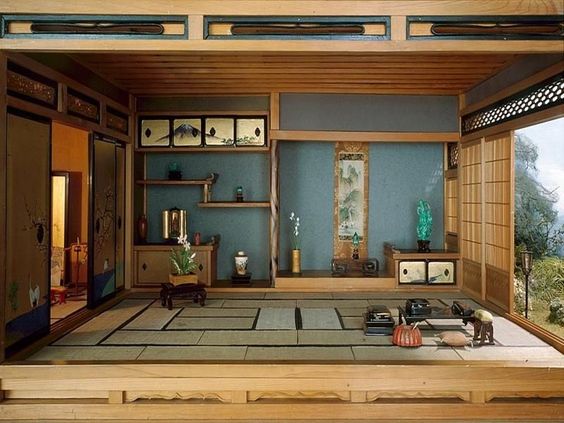Heyku.me – Traditional Japanese homes are known, quite simply, to be the most extravagant homes one could possibly imagine, and would oftentimes be what people imagine when they think about a Japanese-style home. The decorations are usually incredibly over the top, including all sorts of lanterns, decorations, furniture, screens, decorations, pillars, tassels on the doors, rooflines, intricate garden scenes, and more. This also includes traditional Japanese furniture like tables, chairs, dressers, wardrobes, chests, cupboards, fireplaces, rice cooker racks, chopsticks, lanterns, mats, fans, fireplace screens, chopsticks holders, tea lights, lanterns, vases, paintings, wall hangings, mirror frames, tableware, chopsticks, tea pot and ceramics. There is almost no end to the elaborateness of these Japanese home decorations. This also includes the number of individual pieces that make up each room.
Considering Perfect Japanese Interior Design
Although the decoration of many Japanese houses is incredibly ornate, they still use natural light a great deal, as seen in their floors, walls, ceilings and windows. Natural light plays a large role in the atmosphere of a Japanese home, as it brings a sense of calm and tranquility to the interior space. Most Japanese houses have a feeling of light and airiness about them, which is one of the reasons for their popularity in many areas of the world. As such, if you like an atmosphere of tranquility and light, you will probably want to consider looking at some of the Japanese interior design that is available. The main reason for this is that there are many properties that are highly reflective of natural light and therefore provide the perfect backdrop for the intricate decorations. Not only that, but they can also be very peaceful and relaxing to walk into in the evening.
One of the most important parts of any Japanese home is its doors. These are usually either sliding or fixed with no-slip glass surfaces, both of which provide excellent image source protection. However, another important element of the interior of such homes is the screens. These screens are beautifully decorated and can be very decorative or have simple designs. Some of the more common designs include cherry screens, multi-colored screens, rice paper screens and the like.
 Of course, one of the most traditional features of the Japanese home is the ceiling. These days, many people are choosing to use a traditional Japanese house interior design, as it adds a wonderful antique feel to the room. If you have an old-fashioned Japanese home, you may also have beautiful screens hanging from your ceiling. One of the most popular designs is a five story scroll design, which provides the perfect backdrop for the image of the traditional Japanese home depicted in paintings. Some more exotic designs include cherry blossom screens, temple screens, fans, dragon screens and many others.
Of course, one of the most traditional features of the Japanese home is the ceiling. These days, many people are choosing to use a traditional Japanese house interior design, as it adds a wonderful antique feel to the room. If you have an old-fashioned Japanese home, you may also have beautiful screens hanging from your ceiling. One of the most popular designs is a five story scroll design, which provides the perfect backdrop for the image of the traditional Japanese home depicted in paintings. Some more exotic designs include cherry blossom screens, temple screens, fans, dragon screens and many others.
Incorporating Japanese Art to Enhance the Beauty of the Home
If you want to decorate your entire home in a Japanese style, one of the easiest ways to do so is to incorporate the art of the Japanese in every aspect of your design. For example, if you choose to use screens, you will need to use some traditional images, such as cherry blossoms or lanterns. However, you should not stop there. Instead of using these images, you should use them in lots, as they will enhance the beauty of your Japanese home. For example, if you have a wall that can be used as an image source, you can paint it with a beautiful picture of cherry blossoms and then hang lanterns above it.

One other important aspect of designing a Japanese home is choosing the right colors. As with many interior designs, bright colors tend to exaggerate the beauty of the furnishings. So you should avoid dark colors and instead choose bright ones, such as yellow, orange, red, purple, blue, green, brown, black, white or anything that has rich shades of color. On the other hand, for the flooring of your Japanese house, the best option is to use earthy tones such as brown, terracotta tiles, which lend themselves well to both traditional and modern Japanese style interior design. If you want to create a truly authentic look, try incorporating a small amount of traditional Japanese motifs such as a small lantern, which symbolizes the spirits of the dead, on the flooring.
Designing a House with Japanese Characteristics
The most interesting thing about designing a Japanese home is that the basic furnishings are available in almost any material, including wood and metal. It’s up to you whether you want to go for one of the regular Japanese houses, with furniture based on the typical oriental style, or opt for something a bit more exotic, such as Japanese lacquered wooden cabinets or even bamboo floors. As far as the walls go, you have plenty of options. You can choose to have them plain or you can get very innovative and have them painted with beautiful motifs, adding to the beauty of the interior design. As far as the floors go, you’ll find them easily available in traditional Japanese style as well as modern styles, with the wooden ones being the most popular choice.

One of the most important things to keep in mind when working with a Japanese home interior design idea is that it should be able to reflect the real traditions of traditional Japan. For example, you need to ensure that there are paintings on the walls that actually portray historical events, so that the entire room and the house feel like it was designed during that time. You need to remember that each room is supposed to represent a different aspect of traditional Japan, which means that you’ll need to incorporate each element in a proper way. For example, in a traditional Japanese house interior design, it would be very unusual for the dining area to be entirely decorated in wood. Rather, this part of the house would be set aside for the sake and would often be the scene of family discussions, as well as being a place for meals.
